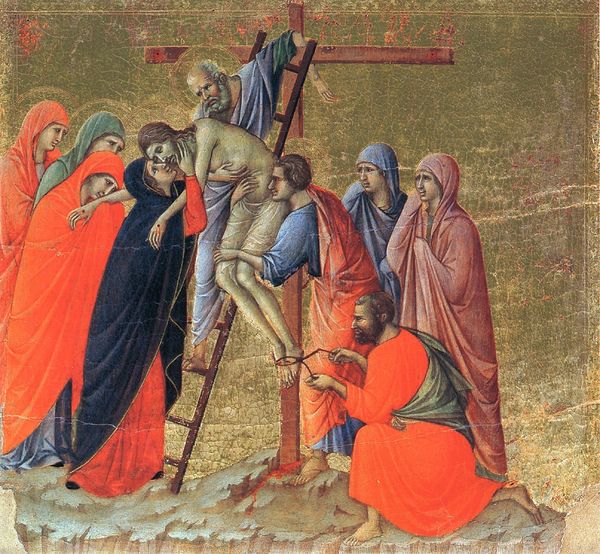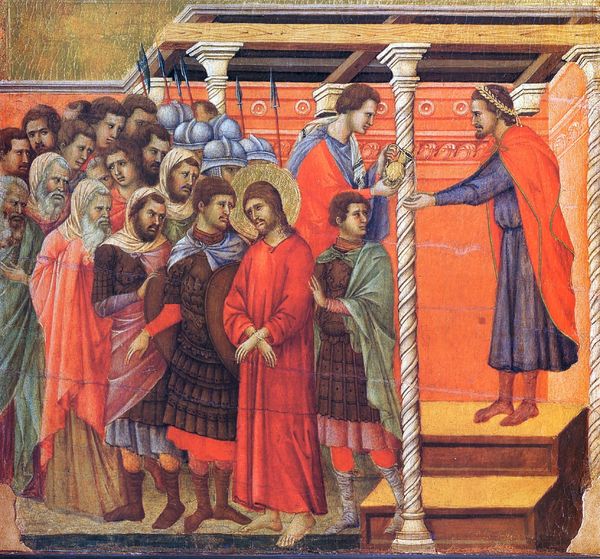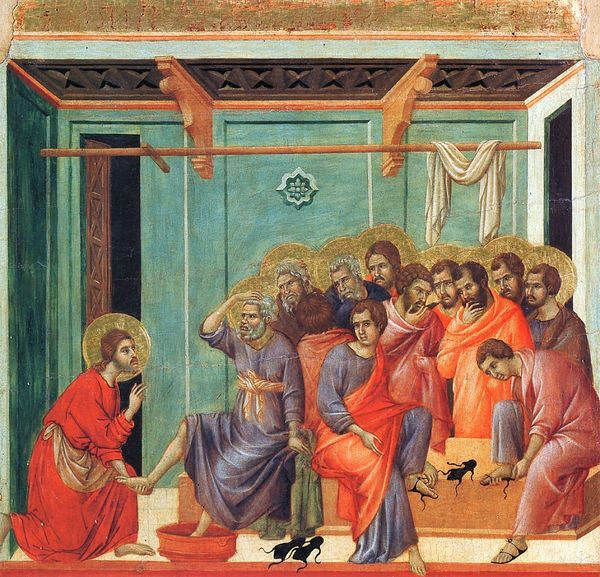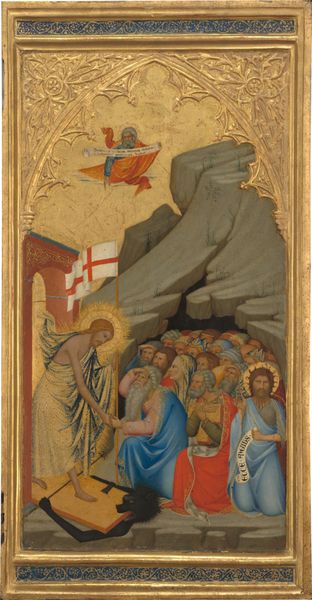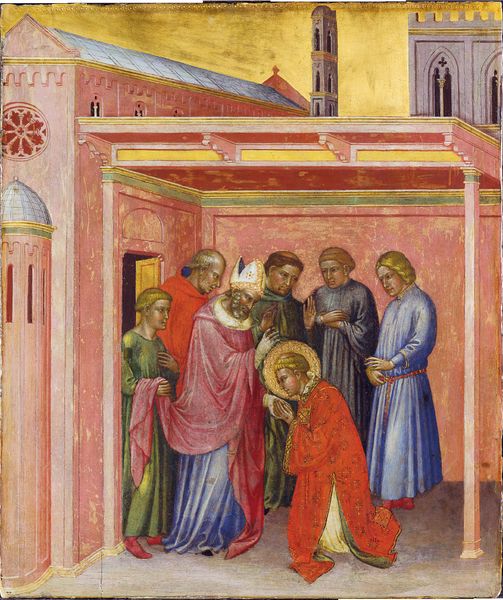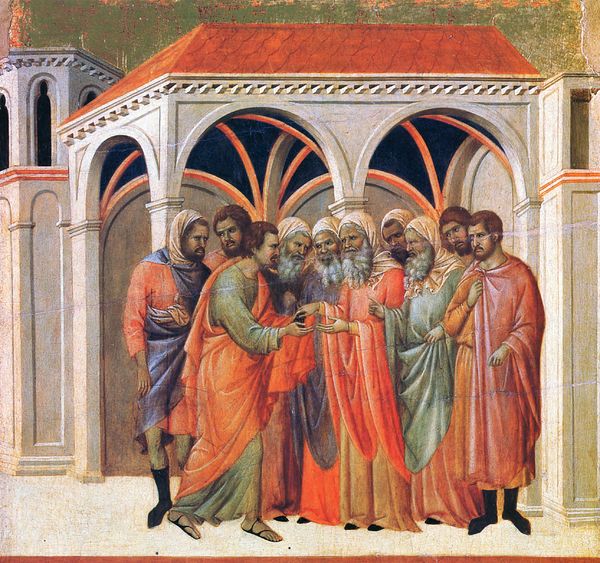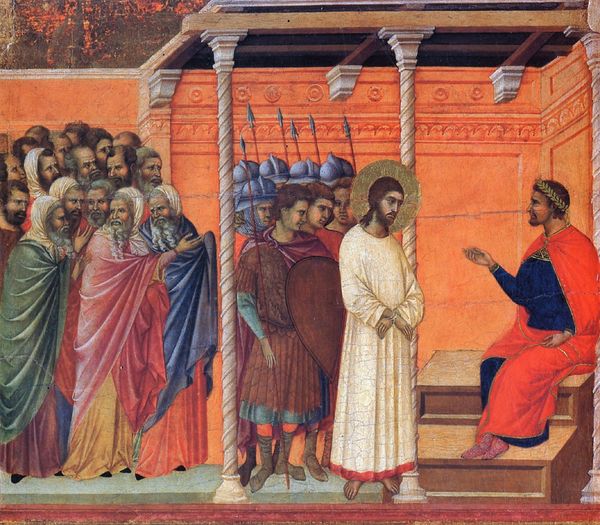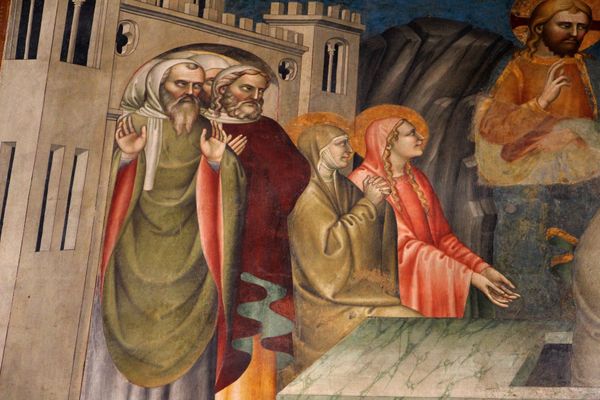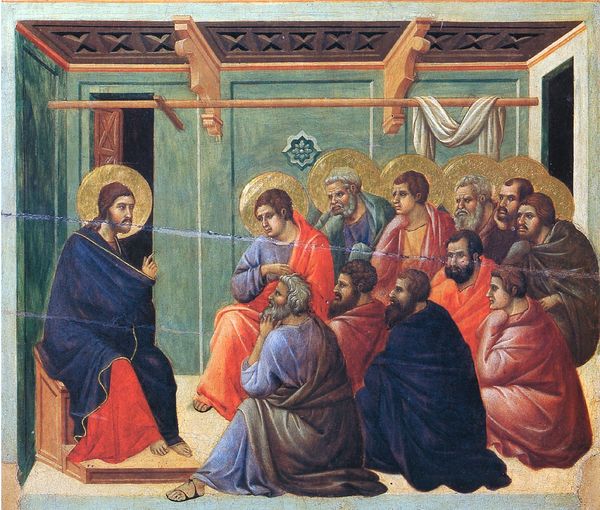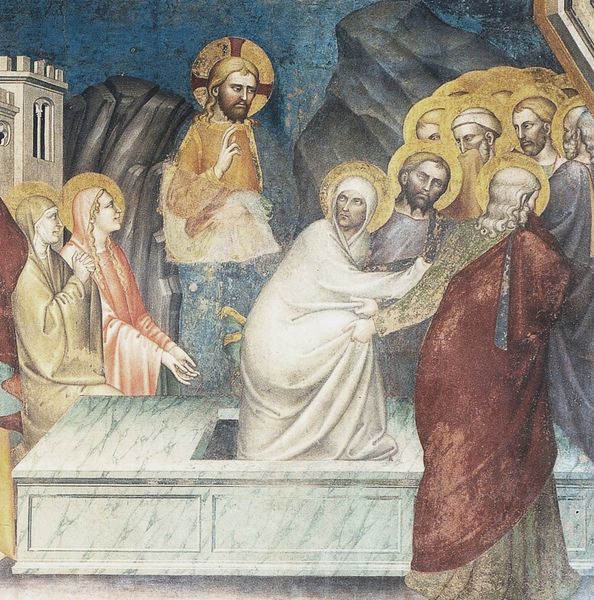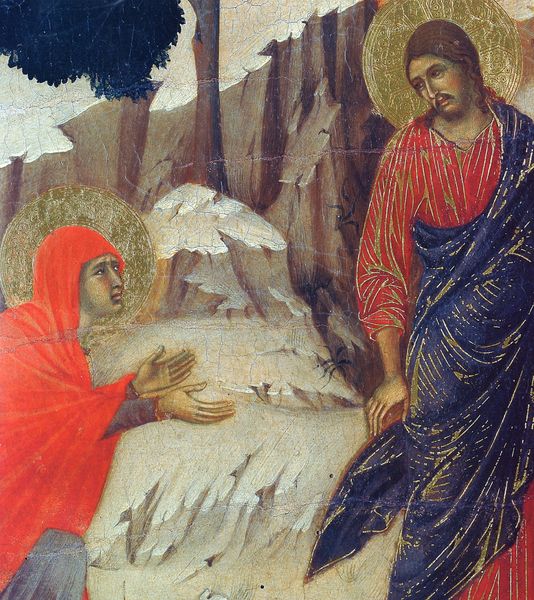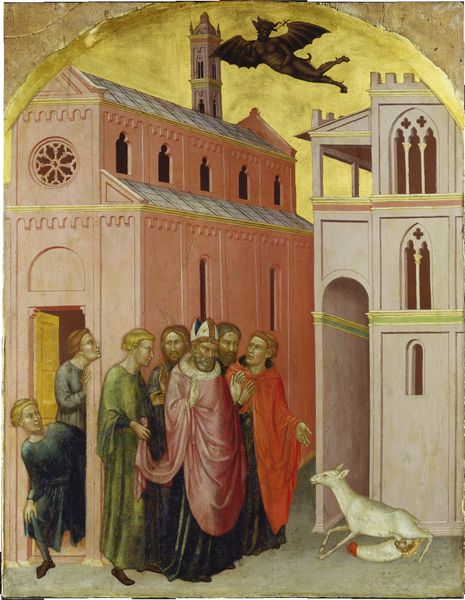
panel, tempera, painting, oil-paint
#
medieval
#
panel
#
allegory
#
narrative-art
#
tempera
#
painting
#
prophet
#
oil-paint
#
sienese-school
#
holy-places
#
figuration
#
oil painting
#
jesus-christ
#
christianity
#
history-painting
#
italian-renaissance
#
christ
Copyright: Public domain
Editor: Here we have Duccio’s "Descent into Hell," a tempera and oil on panel painting from 1311. It’s remarkable to see Christ descending into this almost cavernous space filled with figures. There’s a strong sense of depth and drama here, especially with that figure he's stepping on! What are your initial thoughts when you look at this piece? Curator: This work operates on many levels. Think about what “Hell” represented in the 14th century. It’s not just eternal damnation, but also a metaphor for the earthly suffering and oppression experienced by marginalized communities. Who are these figures Christ is liberating? Are they simply souls awaiting salvation, or do they also represent the poor, the sick, and the socially outcast yearning for liberation in their own time? Editor: So, it's more than just a biblical scene; it has social implications. Curator: Precisely. Duccio invites us to consider the politics of salvation. Christ's descent isn’t just a religious event; it's an act of resistance against the established order, against the hells created by societal injustice. The act of freeing these figures subverts hierarchies. How do we see this scene mirrored in contemporary struggles for liberation? Editor: That reframes everything for me. It's not just about what happened then, but about ongoing power dynamics. What does it mean for us now? Curator: Exactly. It encourages a continuous questioning of who is being "saved," who is being left behind, and who holds the keys to liberation – a constant reckoning with our own social responsibilities. This reframing connects it to modern concepts like intersectionality, class struggle, and challenging systematic biases. Editor: I now understand the painting's enduring resonance—connecting historical oppression with contemporary liberation struggles. Curator: It pushes us to examine whose stories are told and whose remain hidden, within both art history and society at large.
Comments
No comments
Be the first to comment and join the conversation on the ultimate creative platform.
